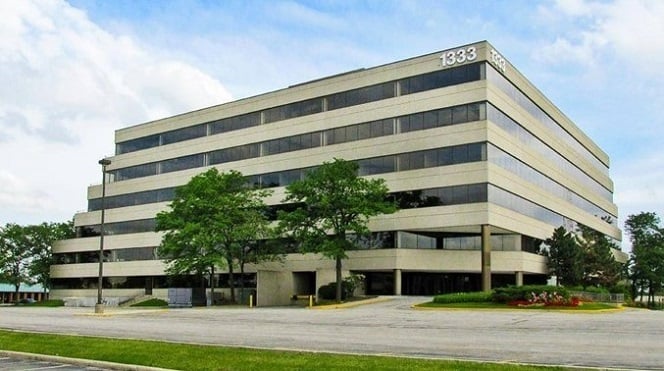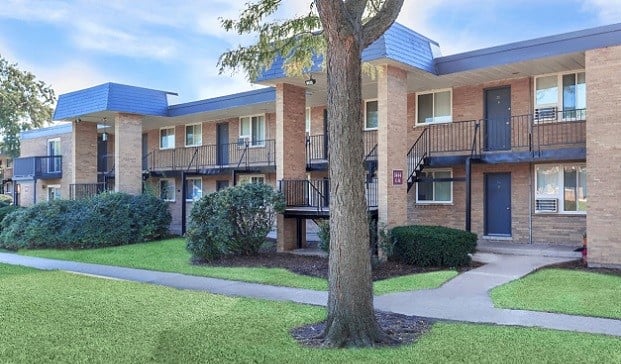
CHICAGO—The opening of several new trophy towers in the West Loop have been the most notable signs of the CBD's resurgence. The towers have also leased very well, and at record rental rates. But all this success left a number of big holes in the market, as top-tier users vacated older Central Loop properties and moved west. Some have begun to wonder if the downtown market will run out of gas before other tenants fill this so-called “shadow space.”
That worry led MB Real Estate to do a special report and break down the numbers on this one issue. Company researchers found that leasing activity at all of the new developments created 3.4 million square feet of space in the CBD that relocating tenants have or will vacate. Of that space, only 1.15 million square feet has been re-leased or re-used. A little more than one million square feet still needs new tenants, and 1.16 million square feet remains as shadow space that will become available over the next three years.
“It's definitely something that people have been concerned about, but shadow space has not had a huge impact on the market yet,” Caitlin Ritter, a market research and analysis manager with MBRE, tells GlobeSt.com.
That could change, but a few key deals have sent important signals. CNA Financial decided to leave 333 S. Wabash Ave., an aging East Loop tower, in favor of 151 N. Franklin, a 797,000 square foot trophy building to the west set to open soon. But in August, Northern Trust agreed to lease 462,000 square feet of CNA's space at 333 S. Wabash, which now has only a 141,420 square foot block available.
“It was a great signal,” Ritter says, partly because it showed downtown space in a 1970s-era building like 333 S. Wabash was desirable. Furthermore, the Northern Trust agreement should encourage other tenants to take a look at this distinctive red tower.
The Franklin at 222 W. Adams and 227 W. Monroe had the most shadow space to fill. It lost two major tenants, William Blair & Co. and McDermott, Will & Emery, which went to 150 N. Riverside and 444 W. Lake, respectively. However, the building successfully released about two-thirds of that space. New tenants include OCC, which leased 105,000 square feet and will leave behind 63,315 square feet at 1 N. Wacker in May of 2018. Cassiday Schade leased 50,000 square feet and will leave 63,000 square feet at 20 N. Wacker.

But what worries Ritter more at this point than shadow space is the 2018 opening of 625 W. Adams. White Oak Realty and CA Ventures' 438,000 square foot tower sits between the downtown core and the burgeoning Fulton Market submarket to the west and has yet to secure any tenants. “It's a very tricky building,” Ritter says. “It's different from all the others, and they took a big risk.” It's not a bad location, but it will require an adventurous tenant willing to take a leap. Fulton Market, for example, was kickstarted by Google's decision to place its regional headquarters there. “That made it a viable option for everyone else.”
Several even bigger question marks hover over the downtown market.
Another 2.5 million square feet of class A space in the renovated Old Main Post Office will be ready by early 2019, but rumors have been flying around that the developer 601W Cos. is close to signing a significant tenant. And Riverside Investment & Development and Howard Hughes recently began construction on a 1.5 million square foot tower at 110 N. Wacker. Anchor tenant Bank of America will leave behind 791,097 square feet at 135 S. LaSalle when it moves in soon after 110 N. Wacker's completion in 2020.
Ritter says the shadow space issue could worsen if these new developments attract existing downtown tenants rather than users from outside the market. Furthermore, when these tenants shift locations, most have downsized. Bank of America, for example, signed a lease for 533,210 square feet at 110 N. Wacker. “This will make handling shadow space much more challenging.”
Want to continue reading?
Become a Free ALM Digital Reader.
Once you are an ALM Digital Member, you’ll receive:
- Breaking commercial real estate news and analysis, on-site and via our newsletters and custom alerts
- Educational webcasts, white papers, and ebooks from industry thought leaders
- Critical coverage of the property casualty insurance and financial advisory markets on our other ALM sites, PropertyCasualty360 and ThinkAdvisor
Already have an account? Sign In Now
*May exclude premium content© 2025 ALM Global, LLC, All Rights Reserved. Request academic re-use from www.copyright.com. All other uses, submit a request to [email protected]. For more information visit Asset & Logo Licensing.








